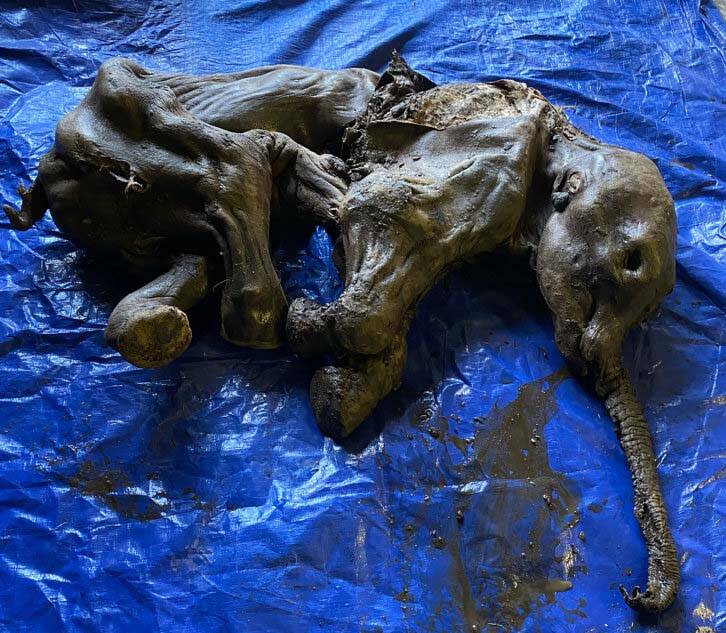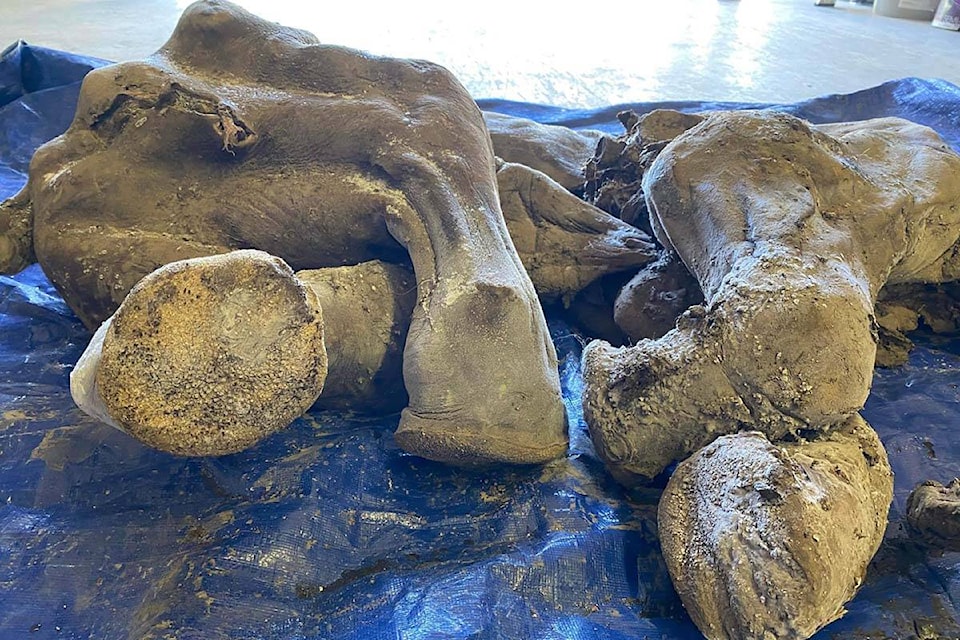It’s not uncommon for gold miners digging through Yukon permafrost to come across fossils or bones, but when Travis Delawski unearthed skin and hair last month he was shocked.
A miner with Treadstone Gold, Delawski was using an excavator with a ripper attachment (akin to a giant metal shark tooth) in the Klondike gold fields near Dawson City on June 21 when he broke through a frozen chunk of earth and noticed something odd.
“Something was looking at me,” Delawski said during a news briefing Wednesday (July 13).
He immediately radioed the discovery in to his boss, company owner Brian McCaughan.
“It’s not human, I think it’s buffalo or something,” Delawski told McCaughan. Then, he saw the trunk and Delawski realized he was looking at a baby woolly mammoth.
“At the time, I didn’t think much of it, but as the days go on it sinks in. It’s pretty significant to everybody really,” Delawski said July 13.
Indeed, paleontologists have confirmed the ancient baby elephant is the most completely-preserved woolly mammoth ever located in North America. Bits and pieces of the creatures are found from time to time in Yukon and Alaska, and a few better preserved mammoths have been discovered in Siberia in the past, but this level of discovery is unprecedented for the region.
For scientists, the find means an incredible new source of information regarding how elephants adapted to survive in such cold, high-altitude conditions, and how the inner workings of woolly mammoths differ from those of modern-day tropical climate elephants. American Museum of Natural History mammal department curator Ross MacPhee said mammoth’s organs and teeth will be key indicators of maturation and evolution.
For Trʼondëk Hwëchʼin First Nation on whose lands the baby mammoth was discovered, the find is meaningful on spiritual and cultural levels as well.
“She is one of our sacred ancestors,” Chief Roberta Joseph said, indicating scientists’ belief that the mammoth is female.
Trʼondëk Hwëchʼin’s language administrator and elders were quickly called in to name the baby mammoth, settling on Nun cho ga, meaning “big baby animal.” In the Hän language, there is no word for “mammoth”, language administrator Georgette McLeod explained July 13, leading them to settle on their word for “animal” instead. McLeod said it was also important to elders to make it clear in her name that Nun cho ga was a baby when she died.
READ ALSO: Nearly complete, 30,000-year-old mummified baby woolly mammoth discovered in Yukon
Yukon’s senior manager of heritage Brian Groves said their initial estimate is that Nun cho ga lived to be 30 to 35 days old. They believe her brief days on earth were spent during the last ice age.
More precisely, surficial geologist Jeffrey Bond said he believes Nun cho ga was alive about 30,000 years ago. He and a team of colleagues were working on a landslide project in Dawson City on June 21 when they were called to the gold mine to help transport Nun cho ga.
“I was like ‘holy smokes’. I knew right away this was super significant,” Bond said July 13. When they arrived on site, Bond said he was impressed to see Delawski and McCaughan had carefully encapsulated Nun cho ga in their excavator bucket and covered her in blankets to protect her from the elements and keep her cold.
Examining the area where she was dug out, Bond said he could see some hairs and possibly a piece of intestine clinging to the sediment. By analyzing the soil layers, Bond determined Nun cho ga was buried about three to four metres below volcanic ash. Because the volcanic ash is known to be about 29,000 years old, scientists determined Nun cho ga was probably sitting around the 30,000-year-old mark.
Gravel surrounding the area where her body was found suggests Nun cho ga died on or near a stream bed, according to Bond. How she died remains a mystery, though.
Nun cho ga is now sitting safely inside a freezer on Trʼondëk Hwëchʼin lands, having undergone a blessing from elders. What comes next for her remains undecided as the First Nation and Yukon government discuss a path forward that respects the desires of numerous stakeholders.
@janeskrypnek
jane.skrypnek@bpdigital.ca
Like us on Facebook and follow us on Twitter.




